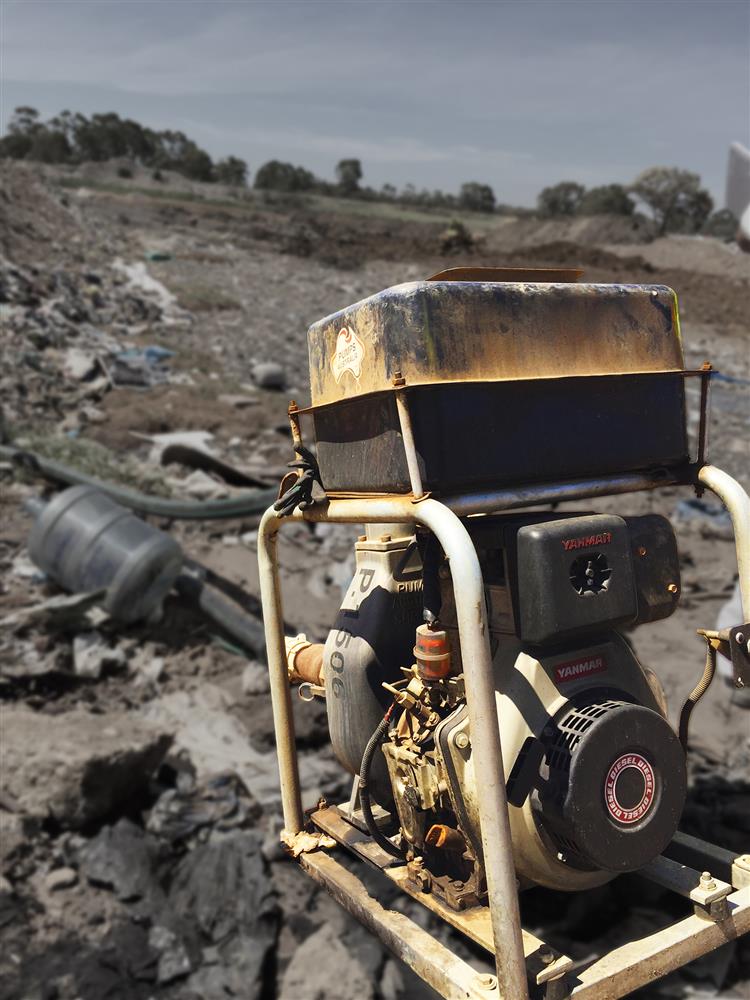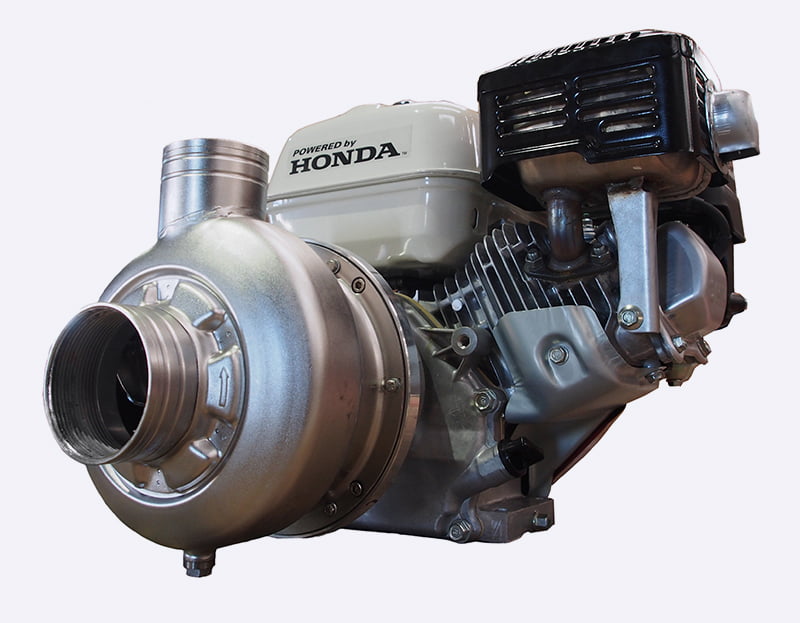At Pumps Australia, we say there is always a reason the pump will stop working; it is just a matter of identifying what has happened. There appears to be a reluctance by pump operators on the ground to understand why the pump has failed or stopped pumping when many times you can tell by looking at things such as parts, debris (sticks and stones), dry running, cavitation and so on. Therefore, when the pump does not work or stops working, generally it’s not the fault of the pump manufacturer. From our experience, the initial problem always comes from the beginning: price versus quality when selecting a pump, availability of models, correct installation, the cocktail of chemicals farmers and industry are required to keep control of, weeds and other tough applications, all play a part.
LET US START WITH WHY PUMPS DON’T SUCK
A centrifugal pump does not suck water. It moves fluid by using centrifugal force to generate the velocity of the liquid. Fluid enters the pump through the suction nozzle, into the eye of the impeller. The impeller vanes catch the fluid and rotate it, both tangentially and radially until it exits the pump on the discharge side. As the fluid leaves the pump it’s under greater pressure than when it entered. Now, does the impeller do ALL of the work? No, it’s only a part of the hydraulic design of the centrifugal pump. The impeller is only useful if the liquid being pumped is controlled by the volute. The volute is another part of the hydraulic design that transforms the velocity of the liquid into pressure and controls the pumped liquid as it’s discharged from the pump. Even self-priming pumps do not suck liquid into the pump, because of the design and ability to handle air, atmospheric pressure pushes liquid into the pump, by lowering pressure at the eye of the impeller.
MY PUMP HAS FAILED
So why do pumps fail? It is not because of poor design; it could be for many reasons. From Pumps Australia’s experience, 99 per cent of pump failure is caused by a defect on the suction side inlet of the pump. A clogged suction strainer can starve a pump of water. This is very common in pool pumps. If a suction hose is of poor quality or has a minute hole in it, it can cause the pump to lose suction and continue to run dry. Always remember, never start a pump unless it has water inside. They will fail. Mechanical seal faces are not designed to run dry. Mixing of farm chemicals is another reason. Chemicals can be tricky if not mixed in the correct sequence. The chemical coagulates into a sticky solution and the pump eventually fails. But selecting the right pump in the first place will go a long way to ensuring its longevity.
PUMP SELECTION
Fully understanding what the pump is required to do is the key to selecting the right one. When a farmer or shire contractor, for example, has a requirement for new a pump, they need to ask the following questions:
1. Where am I sucking from? (Remember, pumps don’t suck.)
2. Can I use an end centrifugal pump or do I need a self-priming pump? i.e. Do I have a flooded suction or do I have to lift water up several meters? These are key questions.
3. Where do I want to pump to? Distance in meters, the diameter of pipes, elevation, and required flow to flow out the end of the pipeline all need to be considered.
4. What am I pumping? Clean water, chemicals such as Flexi-N, sewage, muddy dirty water, dirty water with solids, all of these pumping applications require different pumps.
Evidently, it is not one pump fits all.
SO WHICH PUMP DO YOU CHOOSE?
Pumps Australia’s technical sales team are highly trained in making recommendations and pump selection. We have developed an in-house computer program that can quickly select the correct pump every time. We have also innovated a special design of pump and now manufacture this unique pump – petrol or diesel driven – for many pumping solutions: the Honda-powered SHP80/100. This pump makes for a solid fire-fighting pump and has done a great job for the industry with reasonable flows and good heads pressure. It pumps water and transfers diesel, and even chemicals if flushed out with water after every use. Pumps Australia is an original equipment manufacturer with Honda. Honda petrol engines have set the bar for quality and reliability and comply with the latest emission standards. And so we have elected to power the SHP80/100 with a Honda 13 or 21 hp diesel engine.

The SHP80/100 works as a firefighter because it has high heads up to 70 metres and flows to 1,900 Lpm. It is used by the Department of Fire and Emergency Services here in WA. It is self-priming, and the casing is made from marine-grade aluminium – great for salt water. It features a 304 SS heavy duty impeller open design and 304 suction and discharge connections. The SHP80/100 can also be used as a trash pump for dirty water and even leachate at refuse tips. It has trash solids handling of 35 millimetres in diameter. It is truly a great all-rounder for the farm, shire council and contractors. For pumping corrosive liquids like salt water, acids and Flexi N farm chemical, traditional pumps are not going the distance due to the polyester plastic materials they are made from. So, the Pumps Australia innovation team has come up with a Nitro 25/20 316 SS pump specifically for application with these harsh chemicals.

The Nitro is made from 316 stainless steel and also has a stainless-steel shaft sleeve to suit it – this way the engine shaft is completely protected from potential corrosion. We also figured it would be best to match the quality used on the pump’s casing with the seals, so we opted for Viton rubber seals so it can be used with all types of chemicals. The Nitro-SS pump handles up to 28 millimetres of solids while it maintains a maximum flow rate of up to 1400 litres per minute. The Nitro-SS series can be coupled to a Honda GX200 engine or an array of quality diesel engines such as Yanmar and Kohler. The unit can be easily modified to have an electric start or emergency cutouts, and Pumps Australia can mount the Nitro-SS into a stainless-steel frame upon request.
This Article was Originally Published in OCTOBER – NOVEMBER 2018 | POWER EQUIPMENT AUSTRALASIA
http://power-equipment.com.au/flipper/PEAOctNov18/10/



